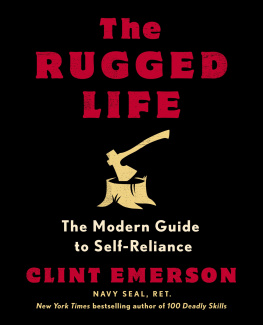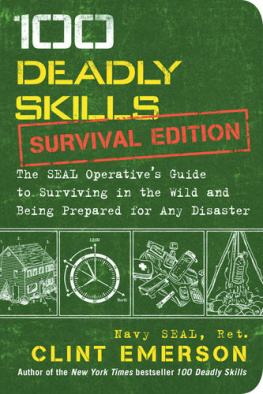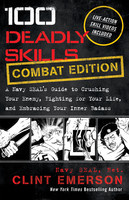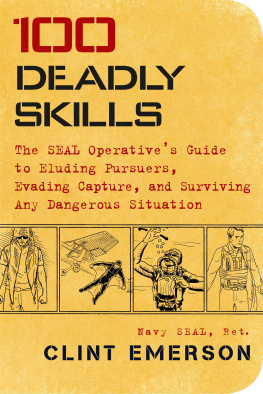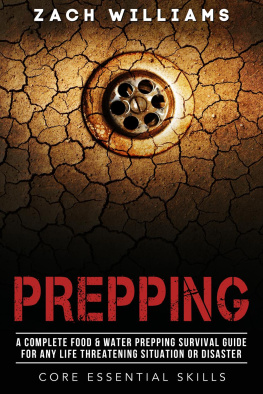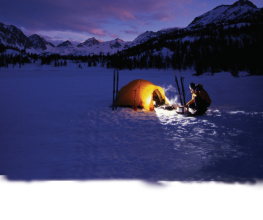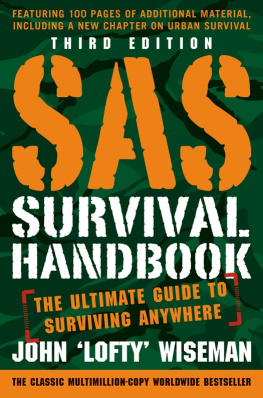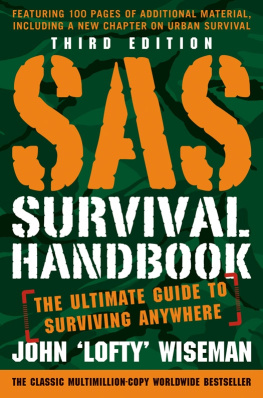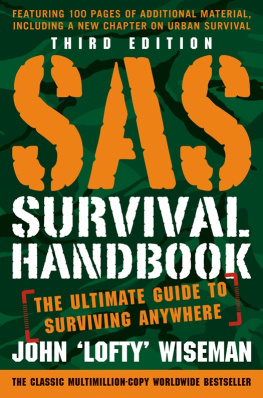
Touchstone
An Imprint of Simon & Schuster, Inc.
1230 Avenue of the Americas
New York, NY 10020
www.SimonandSchuster.com
Copyright 2016 by Clint Emerson, LLC
Illustrations by Ted Slampyak
Cover Design by Ervin Serrano
All rights reserved, including the right to reproduce this book or portions thereof in any form whatsoever. For information, address Touchstone Subsidiary Rights Department, 1230 Avenue of the Americas, New York, NY 10020.
First Touchstone trade paperback edition October 2016
TOUCHSTONE and colophon are registered trademarks of Simon & Schuster, Inc.
For information about special discounts for bulk purchases, please contact Simon & Schuster Special Sales at 1-866-506-1949 or .
The Simon & Schuster Speakers Bureau can bring authors to your live event. For more information or to book an event, contact the Simon & Schuster Speakers Bureau at 1-866-248-3049 or visit our website at www.simonspeakers.com.
Skill testing by Kenzie Emerson
Interior design by Erich Hobbing
Illustrations by Ted Slampyak
Cover design by Ervin Serrano
Library of Congress Cataloging-in-Publication Data
Names: Emerson, Clint, author. | Slampyak, Ted, illustrator.
Title: 100 deadly skills : survival edition : the SEAL operatives guide to surviving in the wild and being prepared for any disaster / Clint Emerson, retired Navy SEAL ; illustrations by Ted Slampyak.
Other titles: One hundred deadly skills | SEAL operatives guide to surviving in the wild and being prepared for any disaster
Description: Survival edition. | New York : Touchstone, [2016] | Includes index.
Identifiers: LCCN 2016026472 (print) | LCCN 2016027382 (ebook) | ISBN 9781501143908 (pbk.) | ISBN 9781501143939 (Ebook)
Subjects: LCSH: Combat survivalHandbooks, manuals, etc. | SurvivalHandbooks, manuals, etc. | United States. Navy. SEALs.
Classification: LCC U225 .E64 2016 (print) | LCC U225 (ebook) | DDC 613.6/9dc23 LC record available at https://lccn.loc.gov/2016026472
ISBN 978-1-5011-4390-8
ISBN 978-1-5011-4393-9 (ebook)
A Note to Readers
The skills described in the following pages are called deadly for a reason. Many were inspired by the missions and training of Special Forces personnel, operatives who are routinely pushed to the limits of their endurance, precision, and ingenuity under life-threatening conditions. But unlike the original 100 Deadly Skills , a manual intended to expose civilians to a shadowy special ops world filled with subterfuge, surveillance, and surreptitious infiltration, this survival edition is geared toward actions that will save livesyours and those of the people around you. The skills in this book are meant to help you overcome a range of deadly situations, from getting lost at sea to being caught in the crosshairs of an active shooter or the tusks of a wild boar.
Still, some of these skills are extremely dangerous, and many should only be attempted in the direst of situations. All require the application of personal judgment, their necessity in any given situation highly dependent on context. A cricothyrotomy (see ) is a brave act of intervention with an extremely high level of risk.
The author and publisher disclaim any liability from any injury that may result from the use, proper or improper, of the information contained in this book. The stated goal of the book is not to enable deadly actions but to entertain while simultaneously imparting a body of knowledge that may come in handy in the absolute direst of emergencies.
Be deadly in spirit, but not in action. Respect the rights of others and the laws of the land. May the strongest survive.
Extinction is the rule. Survival is the exception.
Carl Sagan
CONTENTS
INTRODUCTION
The state of survival isnt what it used to be. Scroll back several hundred years, and the living was harder, but the environment was a known quantity. Though our ancestors could still be felled by illness, natural disaster, or marauding troops, they knew the lay of their land. They probably hadnt roamed far, from birth through old age, but they understood the risks they faced, and prepared for those they could control.
Too often these days were lulled into a false sense of security, an easy complacency born of a matrix of assumptions about the modern world. The trains run on time (or are predictably delayed), we hit the brakes at red lights, we plan adventure treks and travel freely around the globe. If anything goes wrong, we reach for the tiny computers in our pockets and find the answer were looking for or summon the help we need. But the same conveniences that make our lives run so smoothlythe top-of-the-line gear that is meant to make outdoor exploration even cushier, the cars that whisk us to our offices, the computers that research our queries and crunch our complex algorithms, the planes that vault us thousands of feet through the air toward our final destinationsrender us soft on survival skills and vulnerable to predators.
With a change of perspective, our modern conveniences start to look a lot like security loopholes.
Perhaps worst of all, their convenience is a double-edged sword. Our reliance on automated, networked, smart devices and machines has also made us more dependent, less smartunable to find our way around our own cities without the aid of pinging cellular towers or satellites tracking our positioning from outer space, much less make our way around in unfamiliar territory.
If a catastrophic event occurs, will you have amassed the knowledge and undertaken the preparations necessary to survive? What does survival look like in a time when borders are porous and threats are varied, ever-changing, and sometimes unknowable? An increasingly global, networked society demands a new prototype for survival. A blueprint that brings us back to a core arsenal of lost skills, teaching us how to navigate a landscape devoid of street signs or satellite signals while preparing us for the newest and most up-to-date threats emerging in our urban environmentsfrom lightning-fast pandemics to social mediaenabled kidnapping scams.
A new blueprint for survival understands that the line between war and peace can be fractured in an instant, not by a marauding horde but by a lone actor carrying out the delusional fantasies of a self-proclaimed world order. This blueprint understands that in order to survive such an attack, each and every citizen must be prepared to fight. And it also understands that though the natural world around us sometimes seems to have been tamed, Mother Nature still has the power to surprise and shock.
Take it from a retired Navy SEAL with twenty years of special ops service and extensive experience in identifying and fortifying security loopholes: The only elements of crisis under our control are our own preparation and response. A true warrior is prepared to fight in any environment on earth, protecting his or her loved ones from threats as varied as gunshot wounds and home intruders. And whether a crisis is medical, man-made, natural, urban, or rural, a base layer of knowledge and forethought can make the difference between life and death.


